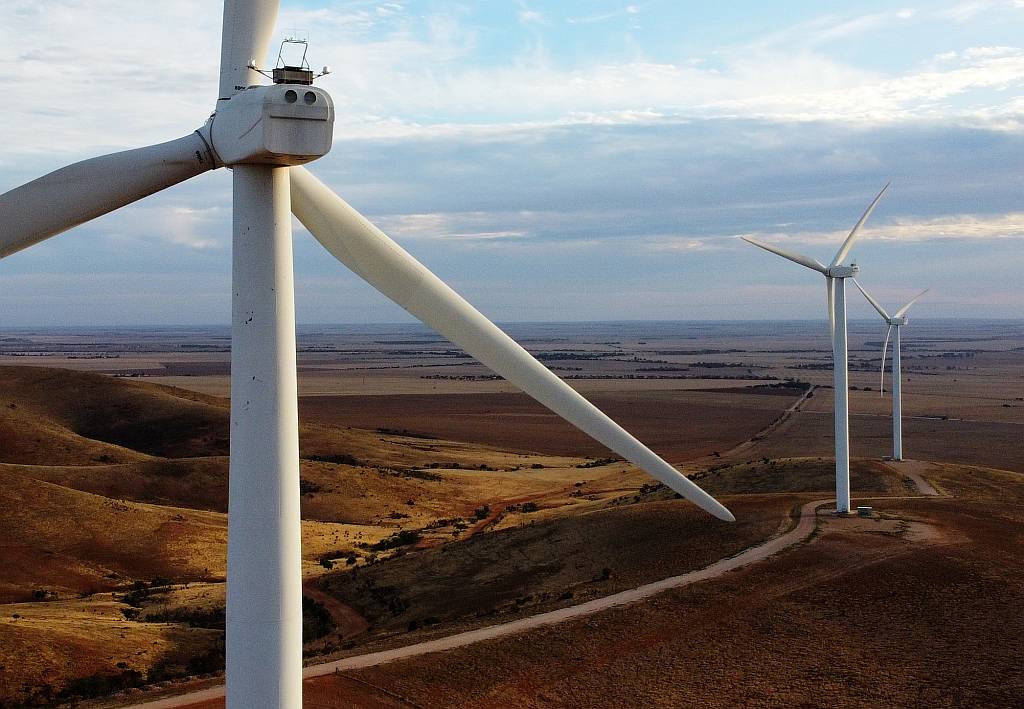Electricity generated by solar or wind power can be used directly to charge vehicle batteries or it can be used to produce hydrogen which can then provide energy for vehicles and other purposes.
| |
The recyclability of wind turbine blades is problematic but they do have a long life. Turbines and turbine blades are most often disposed of because they have been superseded by larger ones. As the technology matures wind turbines and turbine blades should have even longer lives.
As of 2022 wind turbine blades that are fully recyclable are being made, albeit on a small scale so far.
|
|
While the burning of fossil fuels is a proven disaster
we must be careful to not replace one unsustainable technology with another. There seems little doubt that wind power, solar photo-voltaic and solar thermal power are sustainable.
But if either battery-electric or hydrogen-electric cars are to be sustainable either the batteries and fuel cells must have very long lives or they must be recyclable and be recycled.
Battery-electric-vehicles – advantages
Efficiency
Little energy is lost in the charging and discharging of batteries.
Integration
The batteries in electric vehicles could be
integrated into home power systems and into national grids when the vehicle is plugged in.
Hydrogen-fuel-cell-electric vehicles – advantages
Hydrogen can be stored for later use
Electricity itself can't be stored, it must be used as it is generated, but it can be used to generate hydrogen when generation exceeds consumption.
Hydrogen has a great many uses; including for many of the same uses as natural gas. It is not easy to store, but it can be combined with nitrogen to form ammonia which is easy to store and export; ammonia has many industrial uses and the hydrogen in it can be recovered.
Recycling
According to
Ballard, who apparently manufacture fuel-cells, they are recyclable and the valuable metals can be recovered.
Ballard claims that their products meet the relevant
European waste electronic equipment (EWWW) directive.
Battery-electric-vehicles – disadvantages
By far the leading form of battery for battery-electric-vehicles (BEVs) at the time of writing is one of the variations on a lithium battery.
Typically, lithium batteries use, in addition to lithium, substantial amounts of cobalt.
I hope that we are not replacing one polluting industry (fossil fuels) with another, although I can't imagine the environmental problems from electric vehicles being anywhere near as bad as those resulting from mining and burning fossil fuels.
Mining
Lithium mining
Lithium is not a plentiful element.
In Chile and Argentina (the world's second and forth biggest producers of lithium) mining is done in salars with serious associated environmental problems.
While
China is not the biggest producer of lithium it is one of the biggest.
Considering the current repressive, aggressive and belligerent government in that country it is undesirable to rely it.
Cobalt mining
At the time of writing much of the cobalt mining was taking place in third-world countries that had poor safety standards for miners and poor environmental standards for mining.
Jonathan Watts writing for The Guardian, 2019/12/18, published an article titled 'How the race for cobalt risks turning it from miracle metal to deadly chemical' that outlined a number of problems associated with cobalt mining, which had increased "more than sevenfold between 2008 and 2015 with an increasingly evident impact".
Recycling
At the time of writing, some of the lithium in a lithium battery can be recovered on recycling, but:
- It is often not recycled because it is cheaper to mine new lithium;
- If a lithium battery is recycled only some fraction of the lithium is recovered;
- I have read that the lithium recovered from a lithium battery is not sufficiently pure for use in making new batteries.
Recycling is not expected to become a major source of lithium until at least 2030, partly because significant quantities of old lithium batteries are not expected to be available until then.
Redwood Materials aim to recycle vehicle batteries. Their published aspirations are very commendable, I hope that their achievements will be as good.
Hydrogens-fuel-cell-electric vehicles – disadvantages
Hydrogen production
I believe that the production of hydrogen from renewable electricity is only about 30% efficient.
Vehicle efficiency
I believe that the production of electricity from hydrogen in a fuel cell is only about 30% efficient.
As of the time of writing I believe that there is very little recycling of lithium batteries and the lithium recovered when they are recycled is not sufficiently pure for use in making new batteries. It seems to be cheaper to mine new lithium than to recycle old batteries.
I don't know anything about the recycling of the cobalt that makes up a large proportion of lithium batteries.

